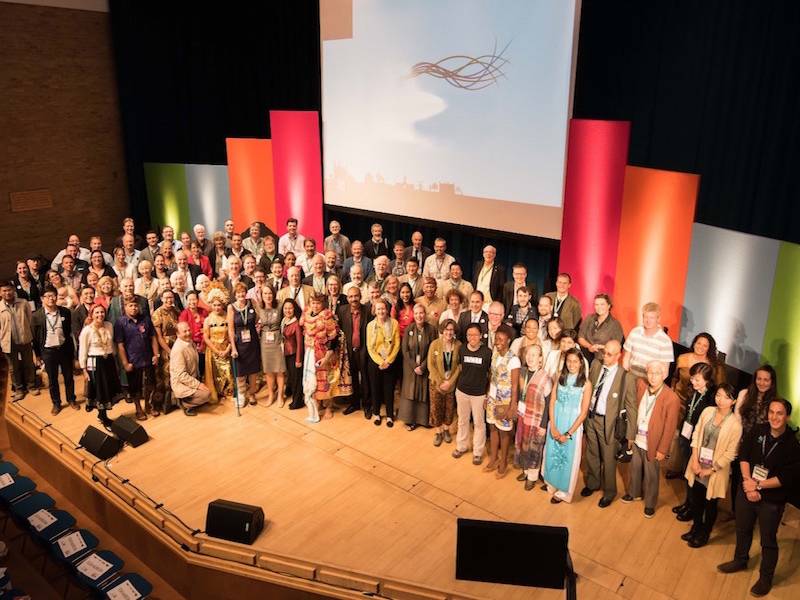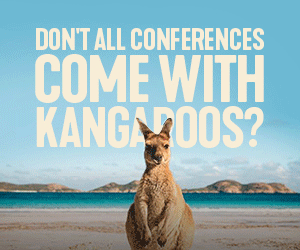Where do Non-Profit Associations Go?

David De Alves, executive director at International STEM Council, looks beyond 2020 to find out the future relationship between non-profits and event destinations.
To say that 2020 was challenging for the global meeting industry is, of course, an understatement. COVID-19, border closures and social distancing requirements have radically changed the entire space for conferences, exhibitions and events.
These changes have been especially felt by the non-profit sector. Tighter constraints and focused needs have meant that there is often little margin to absorb errors, while the sector also required responsive and dynamic continuity mechanisms in order to survive.
Within the non-profit space, education events have been hit particularly hard. The higher education landscape underwent significant transformations as a result of changes in staffing levels, teaching and research practices, as well as the way international student mobility was affected.
In order to respond, non-profit associations have had to increasingly refocus on their core mission, with an eye first and foremost towards their own membership base and their fundamental need for engagement and collaboration with the wider world.
"...‘virtual and hybrid meetings’, for example, will undoubtedly evolve as a response to market needs."
It is often easy to forget that associations exist to enable their members to achieve and organise outcomes collectively. Without the active engagement of members themselves, many associations risk becoming top heavy. They risk being on a treadmill of pursuing one digital event after another, without a core base to give meaning and purpose to the very events they run.
As such, when formulating strategies for a post-COVID world, many convention bureaus, destinations and suppliers need to re-address the alignment of their needs with those of their buyers. When trying to formulate any blueprint plans that involve many different stakeholders, the often obvious but missing key is a greater understanding of motives, perspectives and needs.
Without this understanding, the perspectives of non-profit associations are easily misunderstood. The needs and priorities of member-based organisations are often finely balanced with limited time and resources. There is also a degree of risk aversion that is very different from corporate and other clients. The rational approach needs to be one that dismantles barriers to entry through relationship building, rather than enacting a purely transactional or service-based model.
"...the often obvious but missing key is a greater understanding of motives, perspectives and needs."
As much as being introduced to destination facilities is important, the creation of on-the-ground relationships proves vital to move beyond a stage where a local organising committee can be formed, to one where outcomes can be delivered. There is no better time for the industry to invest in building relationships in order to have a collaborative approach.

This problem is hard enough in normal times. Fostering introductions and viable links with on-ground groups should be the overriding challenge for any destination proposal. Any worthwhile event requires both real effort and faith in order to lay the basis for stability and certainty - something that, more than ever, is surely pressing for non-profit associations.
The provision of actual commitment and resources from destinations should be focused on breaking down the barriers to entry through good faith relationship-building and co-operation in far more dynamic and closer ways.
In doing so, it is important to not see association events as purely transactional. Building networks and relationships and organising members, all leads to a sustainable cycle of active host communities who provide sustainable long-term legacy goals and create ongoing opportunities for themselves.
"The provision of actual commitment and resources from destinations should be focused on breaking down the barriers to entry through good faith relationship-building and co-operation in far more dynamic and closer ways."
While it’s never easy to propose a new destination, these relationship needs are overlooked in a world that is used to marketing its way out to a solution. While such marketing exercises can be useful - decisions inevitably always fall back to the strength of the relationships built from them.
Undoubtedly, there are many other marketing tangents that in themselves are useful to explore, but they sometimes detract from that core relationship building. The hot words of ‘virtual and hybrid meetings’, for example, will undoubtedly evolve as a response to market needs. However, they will survive only if they can drive the same levels of engagement and collaboration with membership as traditional meeting structures.
Either way, irrespective of the ultimate delivery platform or future challenges, host destinations can reliably invest in the cornerstone of relationship building and specifically in the fostering of local organising committees.
"These relationship needs are overlooked in a world that is used to market its way out and in which it’s never easy to propose a new destination."
While these unknowns can sometimes prove to be a barrier in itself, there needs to be greater work done with facilitating the right conversations and the right groundwork. Merely providing a list of potential contacts is rarely enough.
Instead, the direct involvement of convention bureaus in the formation of local organising committees will allow destinations to understand the sore points. Moreover, it will allow them to dynamically adapt to address needs in ways that are often overlooked and inevitably lead to common stalling of efforts. Changing our perspective and motives towards investing in relationships means that our industry can respond to whatever environment the future presents us with.
"Merely providing a list of potential contacts is rarely enough."
In times such as now, we are increasingly required to focus energy on longer term plans and goals. Not just because the short-term is a game of shifting goals posts, but also because only through the building of relationships a solid foundation is provided for the dust to settle in a post-COVID world19.
While any day-to-day plans remain in limbo, we have an opportunity to refocus on these long-term deep relationships. This gives associations and our industry a once in a generation chance to get off the treadmill and build events from the ground up that are based from the very outset on members, stakeholders and relationships.
Let's not forget what pushes many of us to organise a conference or event: in a more disconnected and fragile world, the meeting industry serves as the greatest hope for people to collaborate, connect and organise.
"Changing our perspective and motives towards investing in relationships means that our industry can respond to whatever environment the future presents us with."
ASSOCIATION PROFILE
 The International STEM Council is a non-profit member-based association working towards the advancement of science, technology, engineering and mathematics throughout the education sector. They aim to fostering community engagement and collaboration through events, conferences and exhibitions.
The International STEM Council is a non-profit member-based association working towards the advancement of science, technology, engineering and mathematics throughout the education sector. They aim to fostering community engagement and collaboration through events, conferences and exhibitions.
Comprised of STEM-based academics, educators, industry partners and professionals, they pursue their goals in science education policy by hosting and creating the space for collaborative forums in cities and regions where they can make the greatest impact and meaningful change.
Author: David De Alves, executive director at International STEM Council.
Other Articles
About Us
Supported by the Union of International Associations (UIA), the International Association of Professional Congress Organisers (IAPCO) and the Interel Group, the global public affairs and association management consultancy, Headquarters Magazines serve the needs of international associations organising worldwide congresses.















